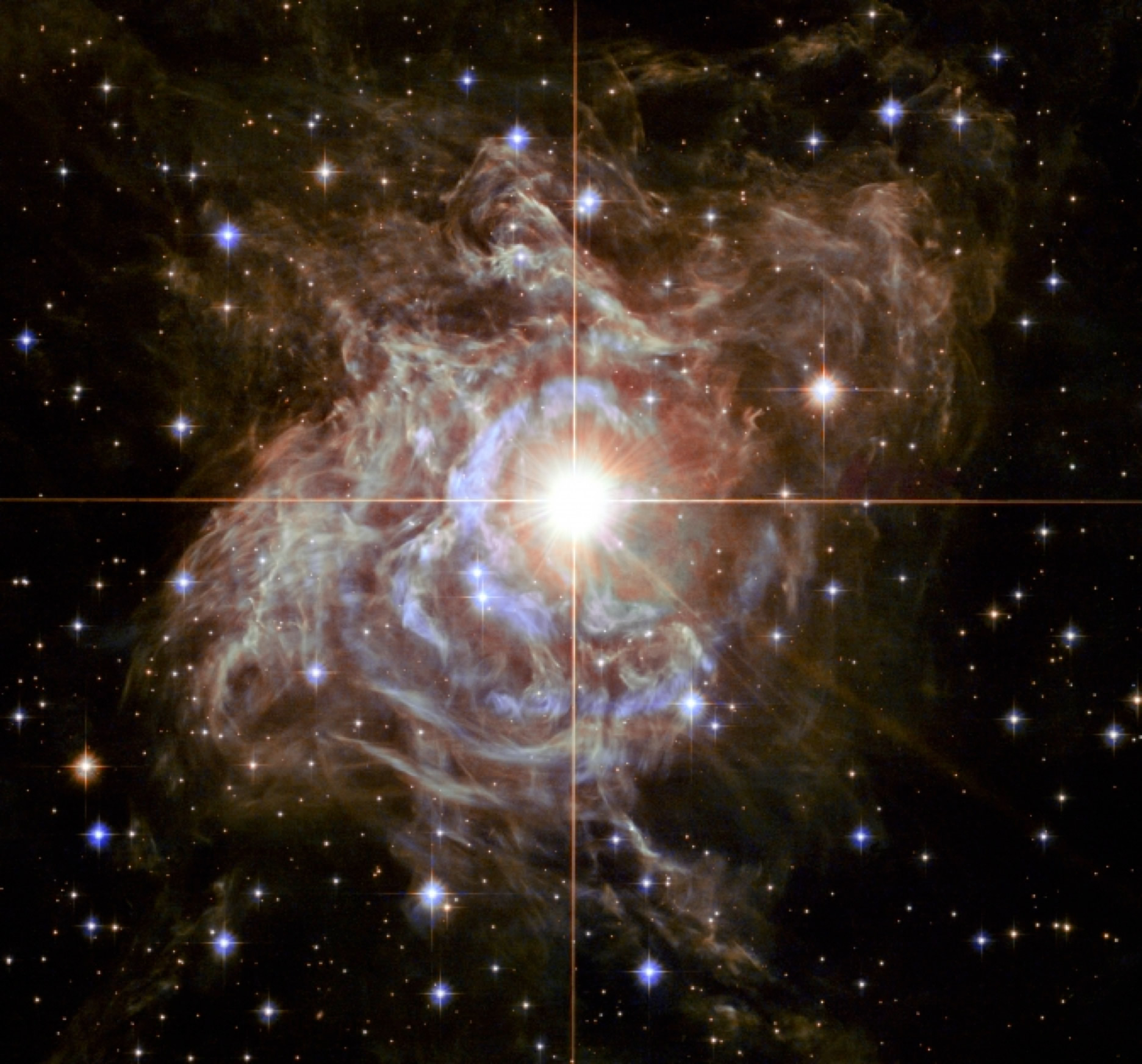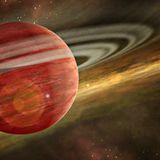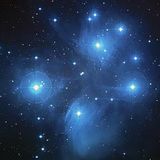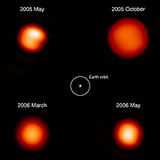
Only the Hubble Space Telescope could deliver a "card-worthy" image of a distant star. In this case it's a Cepheid variable cataloged as RS Puppis, a star 200 times larger than our Sun and ten times more massive. As the Hubble watched over a five week span, this superstar grew brighter and then dimmed as it pulsated and created the illusion of a festive holiday wreath adorned with sparking lights. These stellar heartbeats are breathtaking examples of a phenomenon known as a light echo, where the light generated from the star plays across the nebula surrounding it.
RS Puppis is an unusual star. There are very few Cepheid variables which are encased in gaseous clouds of dust. However, its environment allows for observations of light echoes to be captured with immense clarity. As the star intensifies and expands, we can record the light after it is reflected from edge to edge of its dusty envelope, thus capturing the illusion of the gases moving outward. Since this reflected light must travel a greater distance, it arrives at our observation point slightly later than the light from the star itself. To understand that, think of the sound from a single car horn bouncing off tall buildings down a quiet street. This causes an audible echo and light can sometimes react in the same fashion. It's no little candle either: RS is 15,000 times more luminous than the Sun!
RS Puppis is well known to astronomers. Just five years ago they utilized the light echo around it to measure its distance, giving us the most accurate measurement of Cepheid variable so far known. The distance to RS Puppis has been narrowed down to 6,500 light-years (with a margin of error of only one percent). Even though the cloud around RS seems small, it's incredibly large. Even at a distance of around 6,500 light-years away from us, the light echoes can be captured in motion as they cross the nebula!
Video: Time-lapse of observations from NASA/ESA Hubble Space Telescope. Credit: NASA, ESA, G. Bacon (STScl), the Hubble Heritage Team (STScl/AURA) - ESA/Hubble Collaboration, and H. Bond (STScl and Pennsylvania State University.)
"This effect can make it appear that this propagation of light is happening at speeds greater than the speed of light," says the Hubble Team. "But this is just an illusion."
For the most part, stars stay pretty stable most of their lives, consuming the fuel at their cores quietly as they evolve. However, in some stars when the hydrogen is gone, they may turn into very different creatures - like pulsating stars. As they become unstable, brightening and dimming, expanding and contracting over a period of hours, days or weeks, they leave us with some very unusual findings. In the case of RS Puppis, it's finding incredible beauty and enjoying it during an incredibly beautiful time of year!
Happy holidays!
Original Story Source: NASA/Goddard News Release
About Tammy Plotner - Tammy is a professional astronomy author, President Emeritus of Warren Rupp Observatory and retired Astronomical League Executive Secretary. She's received a vast number of astronomy achievement and observing awards, including the Great Lakes Astronomy Achievement Award, RG Wright Service Award and the first woman astronomer to achieve Comet Hunter's Gold Status.
About Tammy Plotner - Tammy is a professional astronomy author, President Emeritus of Warren Rupp Observatory and retired Astronomical League Executive Secretary. She's received a vast number of astronomy achievement and observing awards, including the Great Lakes Astronomy Achievement Award, RG Wright Service Award and the first woman astronomer to achieve Comet Hunter's Gold Status.




















